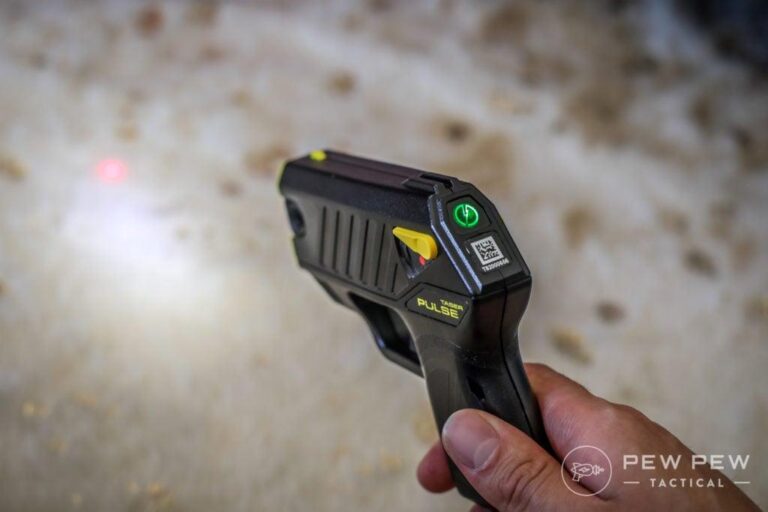Table of Contents
- Understanding the Unique Safety Needs of Seniors with Mobility Challenges
- Key Features to Look for in Stun Gun Alternatives
- Top Non-Contact Personal Safety Devices for Enhanced Protection
- Choosing the Right Mobility-Friendly Self-Defense Tools for Seniors
- Future Outlook
Understanding the Unique Safety Needs of Seniors with Mobility Challenges
As mobility challenges increase, seniors often face unique safety concerns that standard personal defense tools may not adequately address. Traditional stun guns require fine motor skills and quick reflexes, which can be difficult for many older adults to manage confidently. Moreover, the risk of accidental discharge or mishandling becomes a significant concern, potentially compromising their safety rather than enhancing it. To ensure effective protection, it’s essential to consider options that accommodate limited movement, balance issues, and slower reaction times.
Effective alternatives prioritize ease of use, quick accessibility, and minimal physical effort. Key safety features to look for include:
- Ergonomic design: Devices that fit comfortably in the hand or can be easily attached to clothing or accessories.
- Simple activation mechanisms: One-touch or automatic triggers that don’t require complex manipulation under stress.
- Compact and lightweight: Tools that won’t add strain or require significant strength to carry or operate.
- Audible deterrents: Alarms or loud noises to attract attention without the need for physical confrontation.
Key Features to Look for in Stun Gun Alternatives
When selecting an effective and user-friendly self-defense tool, especially for seniors with mobility challenges, prioritizing ease of use and safety cannot be overstated. Look for devices that feature intuitive activation mechanisms, such as simple push-button triggers or wrist-strap activations, minimizing the need for excessive hand strength or dexterity. Additionally, portability is crucial; a compact, lightweight design ensures the device can be comfortably carried and quickly accessed in moments of need without causing strain.
An ideal alternative should also incorporate multi-layered safety features to prevent accidental discharge, such as safety switches or protective covers. It’s beneficial if the device offers auditory or visual deterrents like loud alarms or bright LED lights, which can often stop threats before physical contact is necessary. Lastly, consider the device’s power source longevity and rechargeability-long-lasting batteries and easy charging options provide reliability, ensuring seniors can depend on their protection tools at all times.
Top Non-Contact Personal Safety Devices for Enhanced Protection
When it comes to ensuring personal security, especially for seniors with mobility challenges, choosing non-contact safety devices can provide peace of mind without the physical demands of traditional tools. Advanced technology offers a variety of options that are easy to operate and highly effective. From ultrasonic alarms to wearable alert pendants, these devices are designed to deter potential threats without the need for close-range intervention. Many are equipped with features like automatic SOS alerts, GPS tracking, and two-way communication, allowing users to call for help instantly while maintaining a safe distance.
Here are some of the most reliable non-contact options that combine safety with convenience:
- Personal Alarm Keychains: Emit a loud siren to deter attackers and attract attention.
- Wearable Panic Buttons: Provide discreet emergency alerts sent directly to caregivers or emergency services.
- Ultrasonic Repellents: Use high-frequency sound waves that are uncomfortable to attackers but inaudible to humans.
- Smartphone Safety Apps: Include features like live location sharing, emergency contacts, and instant distress messaging.
Choosing the Right Mobility-Friendly Self-Defense Tools for Seniors
When selecting self-defense tools for seniors with mobility challenges, it’s crucial to prioritize ease of use, reliability, and effectiveness without requiring complicated handling. Devices that are lightweight and ergonomically designed can significantly reduce the difficulty of carrying and activating a tool in stressful situations. Additionally, options with simple activation mechanisms, such as one-handed operation or automatic deployment, ensure that the user can respond quickly without needing fine motor skills or extensive strength.
Consider the following features when evaluating mobility-friendly self-defense tools:
- Compact Size: Helps maintain portability and comfort, making it easier to carry at all times.
- One-Hand Activation: Essential for seniors who might have limited strength or dexterity in one hand.
- Audible Alerts or Vibrations: Adding sensory feedback can enhance confidence and control during use.
- Non-Lethal but Effective: Prioritize tools designed to deter an attacker without causing permanent harm.
- Accessible Storage Options: Waist clips or easy-to-reach pockets can make carrying the tool more convenient.
Future Outlook
In summary, choosing the right personal safety device is essential for seniors with mobility challenges who want to maintain their independence and peace of mind. While traditional stun guns may not always be the best fit, there are plenty of effective alternatives designed with accessibility and ease of use in mind. From personal alarms to GPS-enabled devices, these options offer reliable protection without compromising comfort or convenience. Always consider individual needs and preferences, and consult with healthcare professionals if necessary, to find the solution that best supports safety and confidence in everyday life. Stay informed, stay prepared, and most importantly-stay safe.Check Our Other Blogs
- StunGun – Your Trusted Source for Stun Guns, Laws, and Self-Defense Tips
- PepperSprayLaws – Your Trusted Resource for Pepper Spray Information
- StunGunLaws – Your Trusted Guide to Stun Gun Legality and Safety





